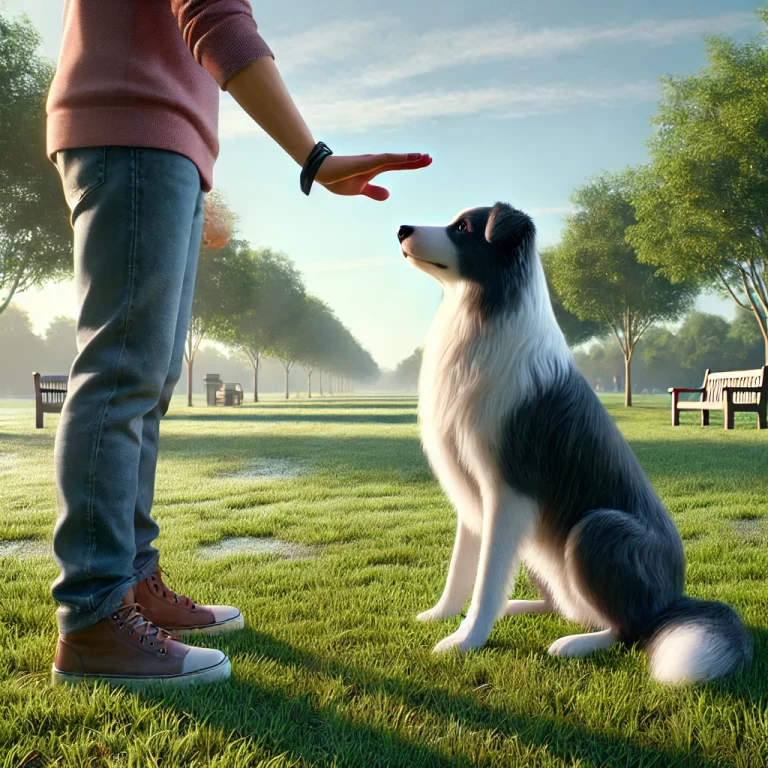Step-by-Step Guide to Teaching ‘Sit’ Command
Let’s face it: A dog who knows how to ‘sit’ on command is a joy to live with. Whether you’re greeting guests, prepping dinner, or crossing a busy street, this simple skill keeps everyone safe and builds trust between you and your pup. But if you’ve ever found yourself waving a treat like a magic wand while your dog stares blankly, this guide is for you. Let’s break it down—no jargon, no stress.

Preparing for Success: Set the Stage
Choose the Right Treats
Dogs aren’t picky, but they are strategic. Use training treats that are small (pea-sized), smelly (think chicken or cheese), and easy to chew. Avoid kibble—it’s like asking a kid to do homework for a carrot stick.
Find Your Training Zone
Start in a quiet room with minimal distractions. A bored dog is a focused dog! Keep sessions short (5-10 minutes) to match their attention span. Pro tip: Train before meals—hunger is a great motivator.
Master Your Body Language
Dogs read your energy. Stand tall, relax your shoulders, and hold the treat near your chest. Avoid looming over them—this can feel intimidating. Think “friendly teacher,” not “drill sergeant.”
The Step-by-Step Training Process
Step 1: The Luring Method
Hold a treat close to your dog’s nose, then slowly move it upward and backward over their head. As their nose follows the treat, their butt will naturally hit the floor. The second their rear touches the ground, say “Yes!” and give the treat. Repeat this 5-6 times per session.
Step 2: Add the Verbal Cue
Once your dog consistently follows the lure, start saying “Sit” as their hips lower. Timing is key! If you say it too early, they’ll link the word to standing; too late, and they’ll miss the connection.
Step 3: Phase Out the Lure
After a few days, hide the treat in your hand and repeat the motion. When they sit, reward from your other hand or a treat pouch. Gradually introduce empty-handed gestures, like an open palm moving upward.
Troubleshooting Common Challenges
Problem: Dog Jumps Instead of Sits
Solution: Lower the treat closer to their nose and move it slower. If they leap, turn your back briefly to reset.
Problem: Dog Ignores the Command
Solution: Check for distractions (squirrels, noisy kids). Go back to a quieter space and shorten the training time.
Pro Tip: Involve everyone in the household! If one person says “Sit” and another says “Park it,” your dog will be confused. Consistency is everything.
Beyond ‘Sit’: Building a Training Foundation
Once your dog masters ‘sit,’ use it as a launchpad for other skills:
- Stay: Ask for a sit, then take one step back. Reward if they hold position.
- Down: From a sit, lure them into a lying position with a treat.
Incorporate training into daily life: Ask for a ‘sit’ before meals, when leashing up, or at curbs. It turns obedience into a habit, not a chore.
FAQs
Q: How long until my dog learns ‘sit’? A: Most dogs grasp it in 1-2 weeks with daily practice. But don’t rush—every pup learns at their own pace.
Q: What if my dog isn’t food-motivated? A: Use toys, praise, or playtime as rewards. Find what makes their tail wag!
Q: Can senior dogs learn this? A: Absolutely! Older dogs might need gentler movements or comfier flooring, but they’re never too old to try.
Teaching ‘sit’ isn’t just about obedience—it’s about building a language of trust. Celebrate small wins, stay patient, and soon enough, your dog will be sitting like a pro. And hey, once you’ve nailed this, you’ll both be ready to tackle the next trick. Fetch, anyone?



